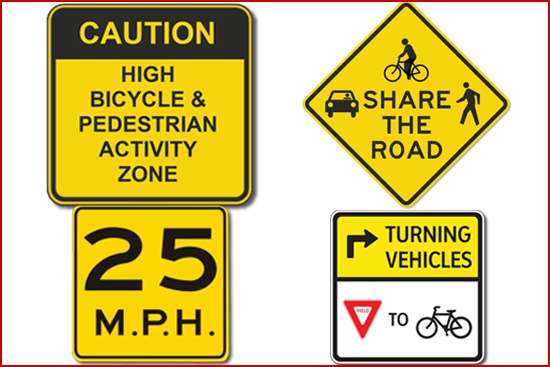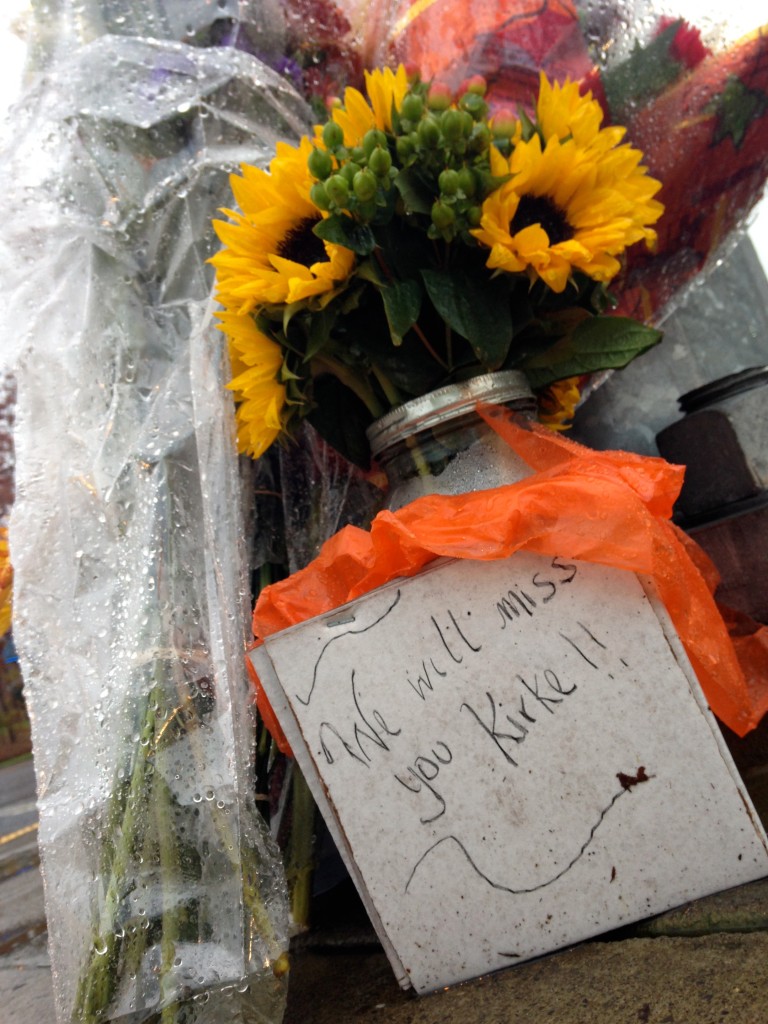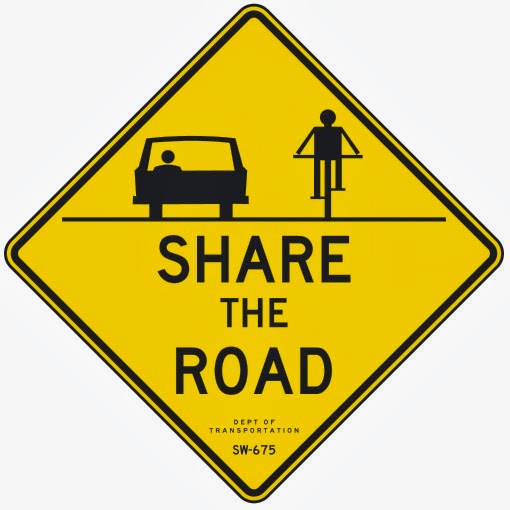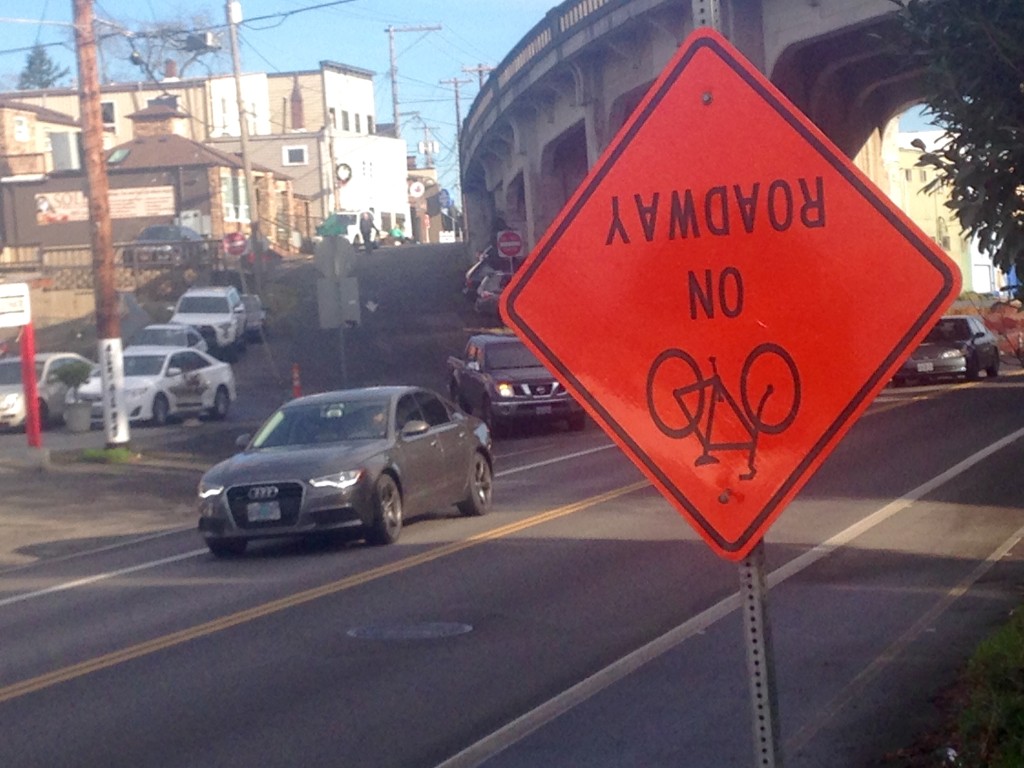I may spew happy-go-lucky about bike adventure, but the ability to have bike adventures depends in large part on a bigger context of bikeability in this world. With that in mind, welcome back to guest blogger Dieter Loibner, keeping it real in the following:)
Part I: Is more really more?
If life is like a box of chocolate, as Forest Gump suggested, I hit the jackpot this last week. Grand-Marnier-truffle-sea-salt-vanilla-caramel-milk-chocolate candy topped with five volcanoes. Riding with the host of this blog along Skyline Boulevard, we floated on a sea of fog that filled the valleys below, while marveling at the snow-clad grandeur of Ranier, St. Helens, Adams, Hood and Jefferson that sparkled in the wan light of a January sun.
That evening I found a flyer on my desk that reminded me of the fact that some who lived and loved to ride no longer can experience such flights of fancy as we did that day. It was a remnant of the memorial service for Kirke Johnson, who was killed Nov. 20th, 2014, riding his recumbent and being hit by a FedEx semi that made a right turn from NW Cornell onto NW Barnes in Cedar Mills. He was one of six bicyclists killed in Oregon in 2014, twice as many as 2013. Car, motorcycle and pedestrian fatalities were up, too. Authorities attributed this development to driver error, bad judgment, distractions and, possibly, to cheaper gas, according to the Oregonian. Go figure.
No matter who makes a mistake on the road, tonnage almost always wins when push comes to crash. And that means riders pay the ultimate price. Like Thomas Palermo in Baltimore, Md., who was killed two days after Christmas while riding in a bike lane, mowed down from behind by a drunk driver, a bishop no less, who was texting and had a history of operating a car while under the influence. Like Sher Kung in Seattle last summer or Kathryn Rickson in downtown Portland two years ago. Or bike shop owner and celebrated recumbent cyclist Marilyn Hayward who took her own life two years after she was hit by a car and sustained brain injuries she never fully recovered from.
Kirke’s case, even though I never met him, hit home, because of what people told me about him: He had just retired from his IT job at Portland Community College and planned to ride cross-country with his wife. He was an advocate for bicycle safety, who wore bright colors, rode with lights even during the day. He averaged 10,000 miles on his steed per year, at age 70. If a guy like Kirke can get killed on a bread-and-butter ride in broad daylight, anybody else is at risk, I thought.
I also like randonneuring, a flavor of unsupported bicycling. Randonneurs USA puts on numerous events across the country each year that cover distances from 100 to 1200 K (ca. 60 to 745 miles). It is not about finishing first, but about finishing, period. Most routes use less traveled roads. Still, eight riders died during the 15-year history of the organization, with three deaths in 2014 alone. Length of ride, time of day, road condition, there was no discernible pattern to these accidents. Except that all of the riders were males beyond age 30 and all of them were hit by cars or trucks.
All of this makes me feel like an endangered species, trying to avoid becoming a statistic like the 722 bicyclists who were killed in accidents in the US in 2012. That number is up too, from 621 in 2010, according to a piece in the Washington Post that cites a study by the Governors Highway Safety Association. This development, the story continues, is a reversal of the trend that saw bike-related fatalities decline steadily since 1975 and correlates with a 62-percent increase in bicycle commuting since 2000. Math can be so simple: More bicyclists, more dead bodies. More time on the road, more risk.
But is that really all there is to it?
Part II: Of carrots and sticks.
Despite the trend of increasing bicycle fatalities, I have a hard time accepting that a greater number of riders has to equal more tragedies. To wit: In the Netherlands and especially in Amsterdam, way more people use their bikes way more often than anyplace in the US (that includes you, Portland), yet fatality rates don’t reflect that. Au contraire: “From 2002 to 2005, an average of 1.1 Dutch biker was killed per 100 million kilometers cycledâ€, a report by Worldwatch claims. That’s less than one fifth of cycling deaths in the US, where during that same period on average 5.8 riders died per 100 million kilometers.
Sure, Netherlands’s topography makes for great riding: It’s flat like a pancake; it has a many waterways with dikes (and bike paths); and it has a much higher urban density, which stems from several centuries ago, long before cars (or bikes) came along. But what makes the country so bike friendly are the policies that were enacted with an eye on community and sustainability. High gas taxes, scarce parking, traffic abatement, better infrastructure and tougher laws to hold drivers accountable encourages using bicycles (and public transport,) while it simultaneously discourages the use of a car. A carrot as incentive for one behavior and a stick as disincentive for another. Building more bike paths and adding more MAX lines, as great as all that is, won’t suffice to produce a substantial and sustained shift toward human-powered or public transport, as long as maintaining and operating a vehicle does not become more expensive and less convenient.
So what can bicyclists do to improve our lot here in the US of A, where policies (not to mention subsidies) still are heavily skewed toward combustion-powered transport, where injured or dead cyclists are considered “collateral damage†and where a climate-change denier is heading the US Senate’s Environment and Public Works Subcommittee? Obviously: Wear a helmet, wear bright colors, turn on the flashers and ride defensively. Then pay attention and get involved with bicycle advocacy. Some items that come to mind, in random order:
- Improve legal protection against reckless and inattentive driving, because it is not OK to kill cyclists.
- Develop high-tech gadgets that alert motorists (and truck operators) to bicyclists approaching from behind.
- Offering better insurance rates to drivers who voluntarily take a bicycle safety course.
- Pushing for the improvement and expansion of bicycle infrastructure that effectively separates cyclists from other traffic.
- And now for the whammy: Getting used to the idea of a bicycle tax to help fund critical and bike-specific projects.
If this sounds provocative, scattered or overly optimistic, so what? You might have a different view and a different list and that’s fine. Discussing diverse views and opinions starts the process of finding solutions.
The terrorist attack in Paris last week is a reminder that there are indeed bigger fish to fry in this world, but it also showed that it is immeasurably harder to react to a crisis than to prevent it. It is my hope that we can work toward making our roads safer, so US bicyclists might enjoy the same status and protection by the law as those who only feel good about venturing into traffic when sheltered by a few tons of steel.
To me, that’s like the ultimate piece of chocolate.





